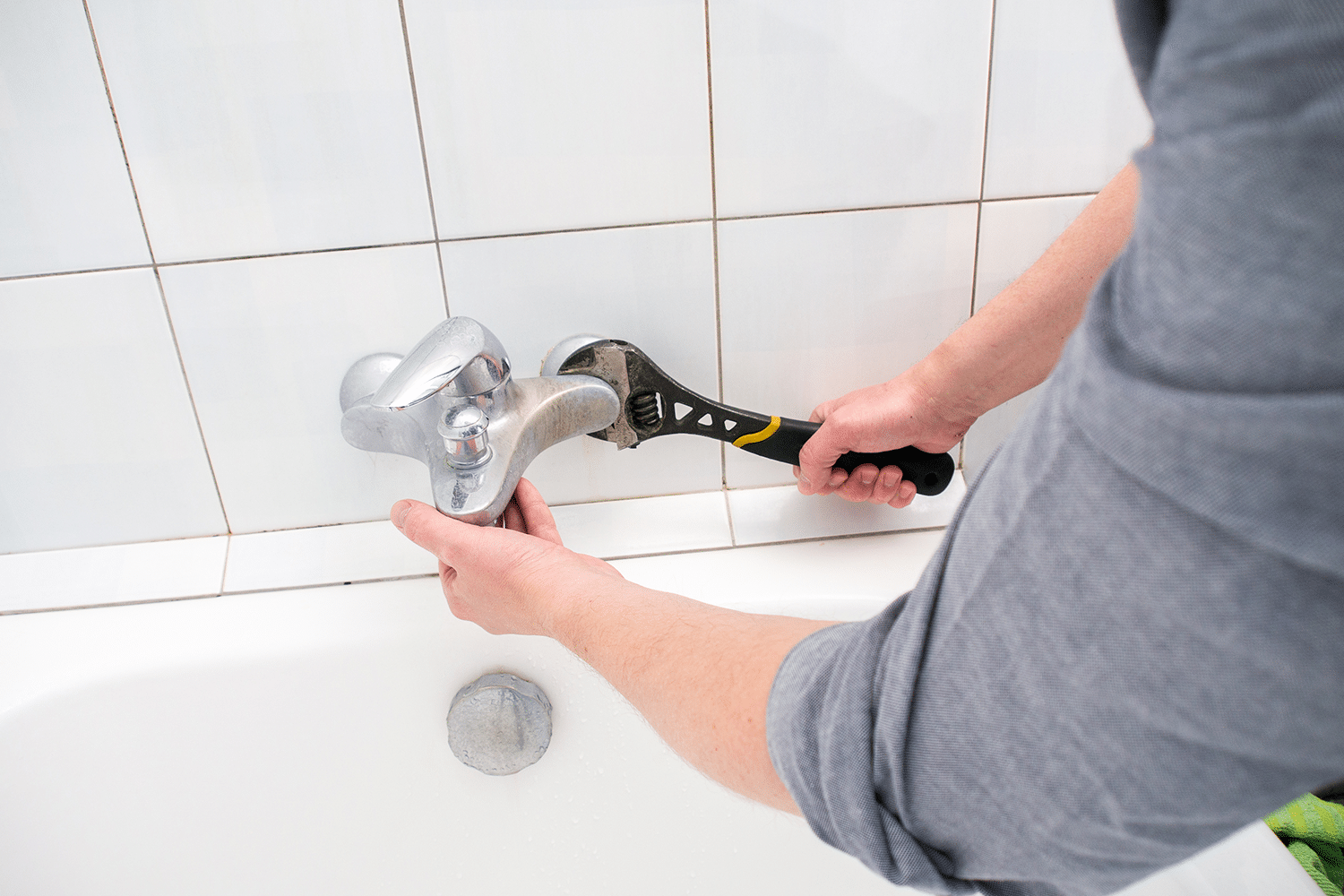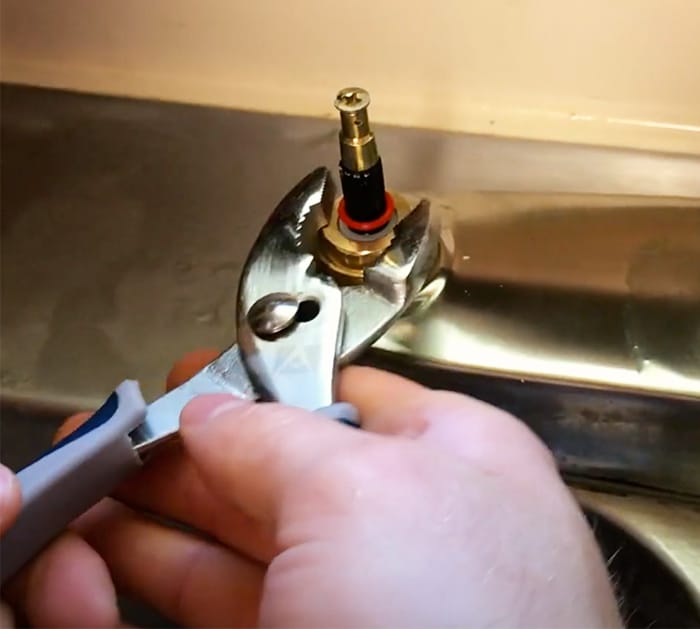Do you find yourself searching for info about What Causes Leaky Faucets & How To Fix Them?

Dripping faucets might seem like a small inconvenience, however their influence exceeds simply the inconvenience of the noise. From wasting water to sustaining unneeded financial prices and health threats, neglecting a dripping faucet can cause various repercussions. In this article, we'll explore why it's vital to resolve this typical home issue immediately and effectively.
Waste of Water
Environmental Impact
Dripping taps contribute significantly to water wastefulness. According to the Environmental Protection Agency (EPA), a single tap trickling at one drip per second can squander more than 3,000 gallons of water each year. This not just strains water resources however likewise affects ecosystems and wildlife depending on them.
Financial Expenses
Enhanced Water Costs
Past the ecological impact, leaking taps can inflate water expenses substantially. The gathered waste with time converts right into greater energy costs, which might have been prevented with prompt repairs.
Possible Home Damages
In addition, extended trickling can bring about damage to fixtures and surfaces surrounding the faucet. Water build-up can trigger staining, rust, and even structural issues if left ignored, leading to extra fixing prices.
Health Problems
Mold And Mildew and Mold Development
The consistent visibility of wetness from a dripping faucet develops an excellent setting for mold and mold growth. These fungi not just compromise interior air top quality however additionally present health threats, especially for people with breathing problems or allergies.
Waterborne Conditions
Stagnant water in trickling faucets can become a breeding ground for germs and other pathogens, increasing the threat of waterborne diseases. Pollutants such as Legionella microorganisms prosper in stagnant water, possibly bring about major illnesses when ingested or breathed in.
DIY vs. Expert Fixing
Advantages and disadvantages of DIY Repair Service
While some may attempt to fix a dripping faucet themselves, do it yourself fixings come with their own set of challenges. Without proper knowledge and tools, do it yourself efforts can exacerbate the issue or result in insufficient fixings, lengthening the trouble.
Advantages of Employing an Expert Plumber
Employing a specialist plumber ensures that the underlying reason for the dripping faucet is resolved efficiently. Plumbing professionals have the know-how and devices to diagnose and fix faucet issues successfully, conserving time and reducing the risk of further damages.
Step-by-Step Guide to Fixing a Dripping Tap
Tools Required
Before trying to fix a leaking tap, collect the essential devices, including a flexible wrench, screwdrivers, substitute parts (such as washing machines or cartridges), and plumber's tape.
Typical Tap Issues and Their Solutions
Identify the kind of tap and the certain problem creating the drip. Usual troubles include worn-out washing machines, rusty shutoff seats, or defective O-rings. Refer to maker directions or on the internet tutorials for step-by-step guidance on repair services.
Safety nets
Normal Maintenance Tips
To stop dripping faucets, perform routine upkeep such as cleansing aerators, inspecting for leaks, and replacing worn-out components quickly. Additionally, think about setting up water-saving devices or upgrading to much more effective components.
Relevance of Prompt Services
Addressing dripping taps as soon as they're discovered protects against more water wastefulness and prospective damage, eventually saving both water and cash in the long run.
Impact on Residential Property Worth
Assumption of Well-Maintained Residential Property
Preserving a property in good condition, consisting of attending to upkeep concerns like leaking faucets, enhances its regarded value and charm among possible customers or tenants.
Impact on Resale Worth
Characteristics with well-kept plumbing components, consisting of taps, command greater resale values in the property market. Addressing leaking taps can add to a favorable impression during residential property inspections and settlements.
Ecological Responsibility
Specific Contribution to Conservation
Taking responsibility for dealing with leaking taps straightens with wider efforts toward water preservation and environmental sustainability. Every individual's actions collectively make a considerable impact on protecting priceless resources.
Lasting Living Practices
By prioritizing timely repair work and embracing water-saving practices, individuals add to sustainable living techniques that profit both present and future generations.
Verdict
Dealing with a leaking tap exceeds plain comfort; it's an important action towards preserving water, reducing financial prices, and guarding wellness and residential property. Whether with do it yourself repairs or specialist assistance, acting to repair leaking taps is a little yet impactful way to advertise responsible stewardship of sources and contribute to a healthier, much more lasting future.
How to Fix a Leaky Faucet: Step-by-Step Repair Guide
A leaky faucet may seem like a simple annoyance, but if it's not fixed promptly, that leak could cost hundreds to potentially thousands. From water damage to mold, mildew, and high water bills, even a tiny leak can be catastrophic if left unattended. Damage like this can even affect the overall value of your home, so it's important to take the right approach for leaky faucet repair. You may need the help of a plumber in some cases, but we've got a few tips you can try on how to fix a leaky faucet before calling the pros.
Four Faucet Types
When you're learning how to fix a leaky faucet, the first step is knowing what kind of faucet you're working with! There are four common types.
Cartridge Faucets
Cartridge faucets come in one- or two-handled varieties. In one-handled cartridge faucets, hot and cold water combines in a single cartridge. In the two-handled versions, hot and cold water are controlled separately and mixed in the faucet.
Ball Faucets
Ball faucets have a single lever you push up and down to adjust the pressure and rotate to change the temperature. A slotted metal ball controls the amount of water allowed into the spout.
Compression Washer Faucets
They're the oldest type of faucet, but they're still used in many homes — especially older ones. Compression faucets have two separate handles that, when turned, raise or lower the washer that seals a water valve. This valve stops water from flowing through the faucet when it is turned off.
Disc Faucets
Disc faucets rarely need to be repaired due to their maintenance-free design. The water flow is controlled by two discs — the upper one raises and lowers against a fixed lower disc, creating a watertight seal. If your disc faucet starts leaking, you may need to replace the seals or clean residue buildup from the inlets.
Fixing a Leaky Faucet
Step 1: Turn Off the Water
Whether you're learning how to fix a leaky bathtub faucet or how to fix a leaky kitchen faucet, always turn off the water supply to your working area when you're fixing a leak. The last thing you want is a flood added to your list of things to fix.
Look for the shutoff valves below your sink or around the tub and turn them clockwise to stop the water flow. If your faucet doesn't have shutoff valves, you may need to turn off the water for the whole house. Check to make sure it's off by turning the faucet on. If nothing comes out, you're ready to start the repair.
Step 2: Take Apart the Faucet
How you disassemble your faucet depends on the type of fixture you have. You can use a flathead screwdriver to remove the caps on top of the handle or handles for cartridge and compression faucets. Inside, you should see handle screws. Unscrew these with a screwdriver to remove the handle.
Disc- and ball-style faucets will typically have an inlet screw near the handle, and removing that will reveal the interior of the faucet.
Detach the Valve Stem
For cartridge- and compression-style faucets, you'll see the inner valve stem or cartridge once you remove the faucet handles. If you have a compression faucet, unscrew the brass valve stem. If you have a cartridge faucet, pull out the cartridge. If your cartridge has been in place for a while, it may require some tools or extra force to remove it due to mineral deposits.
Examine and Replace Parts
Once you've removed the parts, check them out to confirm what needs to be replaced. You may see corroded rubber washers, O-rings, stems, or cartridges. On a ball-style faucet, check the seats and springs for damage.
If you need to repair a leaky disc faucet, check the inlet and seals on the lower disc.
Once you determine what parts must be replaced, visit your local hardware store. Bring the damaged parts with you to ensure you can purchase the correct components to replace them.
Clean Valves and Faucet Cavity
If you've removed a stem or cartridge, you may notice mineral buildup in the faucet's threads. Use white vinegar to clean the valve seat by soaking it for a few minutes, then scrub it away with a soft toothbrush and rinse with warm water. You can also clean the interior of the faucet in the same way.
Reassemble the Faucet
Once your faucet is cleaned and the required parts have been replaced, it's time to reassemble it. Put the pieces back together and slowly turn the water supply back on. Doing this slowly is crucial because too much initial water pressure can damage the new hardware you've just installed.
https://homewarranty.firstam.com/blog/how-to-fix-leaky-faucet

Do you really like reading about How to Fix a Dripping or Leaky Faucet ? Post a remark further down. We will be delighted to find out your opinions about this posting. We hope to see you back again later on. For those who enjoyed reading our page kindly do not forget to share it. Thank you for being here. Revisit us soon.
Comments on “My Causes Behind Addressing a Faulty Faucet”